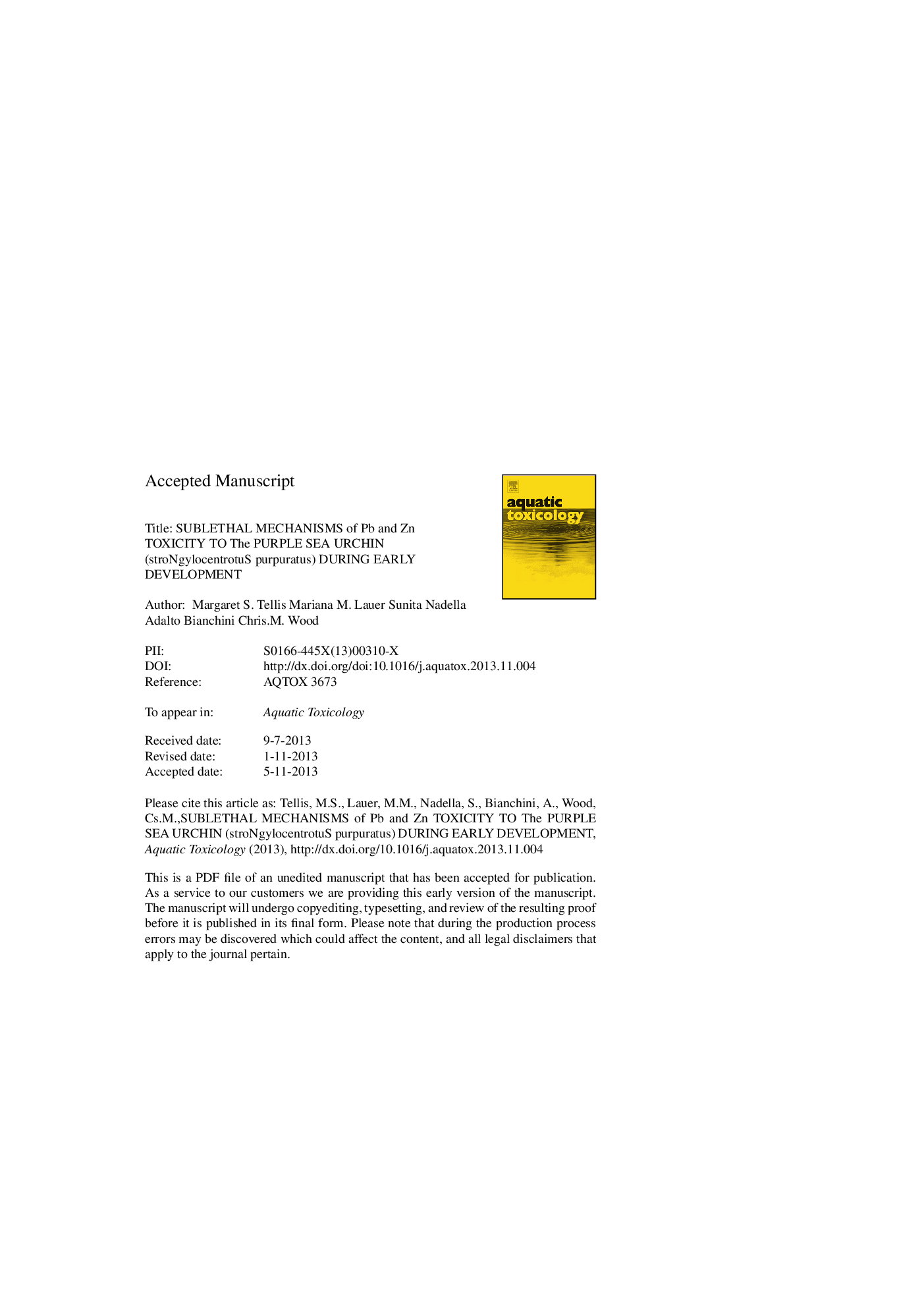| Article ID | Journal | Published Year | Pages | File Type |
|---|---|---|---|---|
| 6382641 | Aquatic Toxicology | 2014 | 45 Pages |
Abstract
In order to understand sublethal mechanisms of lead (Pb) and zinc (Zn) toxicity, developing sea urchins were exposed continuously from 3 h post-fertilization (eggs) to 96 h (pluteus larvae) to 55 (±2.4) μg Pb/L or 117 (±11) μg Zn/L, representing â¼70% of the EC50 for normal 72 h development. Growth, unidirectional Ca uptake rates, whole body ion concentrations (Na, K, Ca, Mg), Ca2+ ATPase activity, and metal bioaccumulation were monitored every 12 h over this period. Pb exhibited marked bioaccumulation whereas Zn was well-regulated, and both metals had little effect on growth, measured as larval dry weight, or on Na, K, or Mg concentrations. Unidirectional Ca uptake rates (measured by 45Ca incorporation) were severely inhibited by both metals, resulting in lower levels of whole body Ca accumulation. The greatest disruption occurred at gastrulation. Ca2+ ATPase activity was also significantly inhibited by Zn but not by Pb. Interestingly, embryos exposed to Pb showed some capacity for recovery, as Ca2+ATPase activities increased, Ca uptake rates returned to normal intermittently, and whole body Ca levels were restored to control values by 72-96 h of development. This did not occur with Zn exposure. Both Pb and Zn rendered their toxic effects through disruption of Ca homeostasis, though likely through different proximate mechanisms. We recommend studying the toxicity of these contaminants periodically throughout development as an effective way to detect sublethal effects, which may not be displayed at the traditional toxicity test endpoint of 72 h.
Related Topics
Life Sciences
Agricultural and Biological Sciences
Aquatic Science
Authors
Margaret S. Tellis, Mariana M. Lauer, Sunita Nadella, Adalto Bianchini, Chris M. Wood,
